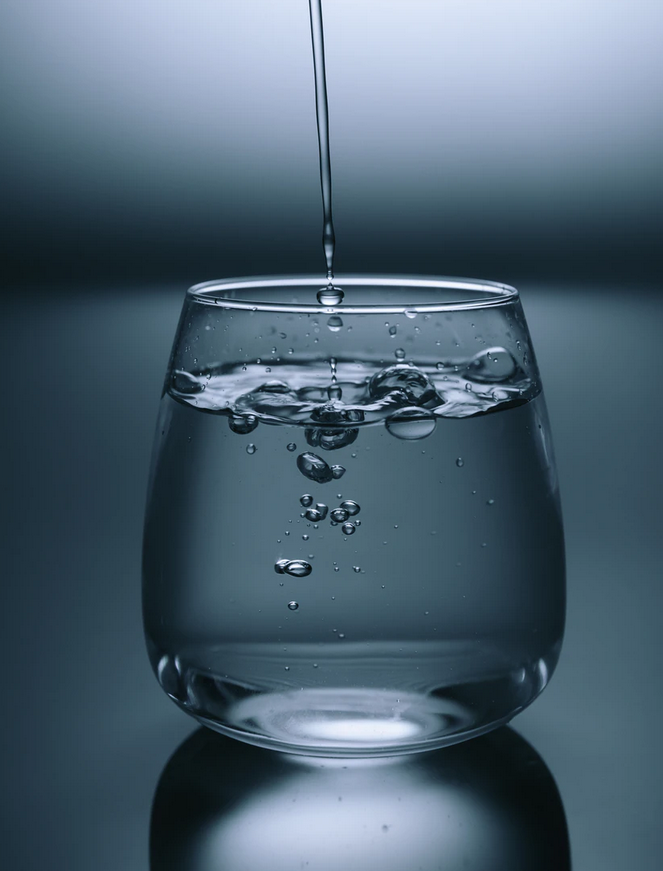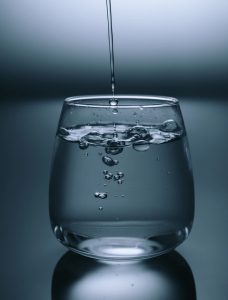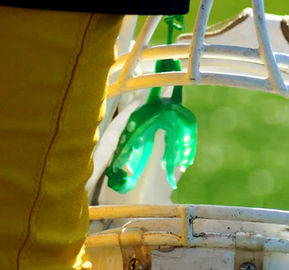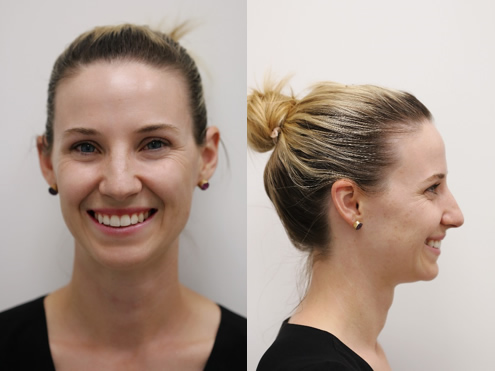
Invisalign – this was not my first course of orthodontics. I endured three tedious years as a teenager. I had overcrowding and a deep over-bite. I was lucky enough to have the full experience; a bite plane plate, lip bumper, head gear and then finally, braces. I wore my retainers religiously for the first few years after having my braces off and then travelled overseas for my gap year. That was the end of my perfect compliance and perfectly straight teeth.
Fourteen years later my teeth had moved and I was starting to notice, in particular my lower right canine (eye tooth) and upper lateral incisors (second front teeth). I was fortunate enough to be working with the wonderful Dr. Lou, who had started the Invisalign course and I volunteered to be her first case.
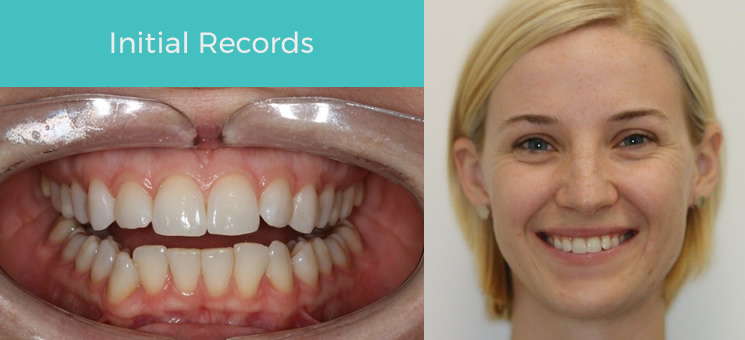

The Process
The first appointment was a consultation to evaluate my treatment needs and take records of my teeth. I will mention that I was in the first trimester of pregnancy; not ideal for impression taking and heightened gag reflex! We managed to get the impressions taken and the intra and extra oral photographs without showing Dr Lou what I had for breakfast. My records were then sent to Invisalign in The United States and scanned by 3D scanner.
Two weeks later I had an appointment with Dr Lou to discuss my orthodontic treatment options. Dr Lou showed me my treatment plan in 3D with a program called Invisalign Clincheck. She was able to show me exactly how my teeth would move with every aligner – all 24 of them! I was able to see what the end result would be. With a click of a button we approved my treatment plan and waited for about 2 weeks for my aligners to be made and posted to Tooth Dental.
By the time we were ready to start treatment I was in my second trimester, my nausea had eased but my snacking was out of control! The first appointment for the physical side of Invisalign treatment was to place ‘buttons’ on some of my teeth and to insert my first set of aligners. These so called buttons involved placing little ‘blobs’ of composite resin onto the required teeth – these guided my teeth to move in a desirable direction to achieve the result I wanted. The buttons were to stay on my teeth until the end of my treatment. Dr Lou gave me my first 3 sets out of 24 of aligners, gave me very strict instruction to wear them 22 hours a day and sent me on my merry way.
My experience
Holy moly, I thought I was prepared for the discomfort after having braces, I was wrong! My whole head hurt, I got ulcers from the buttons (and not wearing the aligners 22 hours a day – snacking!) and my teeth were so tender. Comparatively to braces though, it was still so much better. I was only able to take Panadol to help with the headaches because of being pregnant, Neurofen would have helped so much more!
This lasted for the first two weeks and eased just in time for my second set of aligners. This time the discomfort wasn’t worth complaining about at all and the next 22 aligners were similar. Very mild discomfort in certain teeth for a day or two. I had a very mild lisp when wearing my aligners, this made answering the phone at work quite an amusing challenge “Thank you for calling Tooth Dental”.
The next twelve months I saw Dr Lou for an appointment every 6 weeks to check my progress, slap me on the wrist for not wearing my aligners 22 hours a day and to give me my next 3 sets of aligners. I will be honest, I was not the most compliant patient, let’s blame pregnancy. It became a regular joke at Tooth Dental that my aligners were in fact invisible.
When I was onto my final aligners, Dr Lou and I decided we weren’t 100% happy with the results and my treatment needed some refinement. That naughty lower canine was still not standing upright. Dr Lou took more impressions and photographs of my teeth and sent them to back to Invisalign.
Refinement
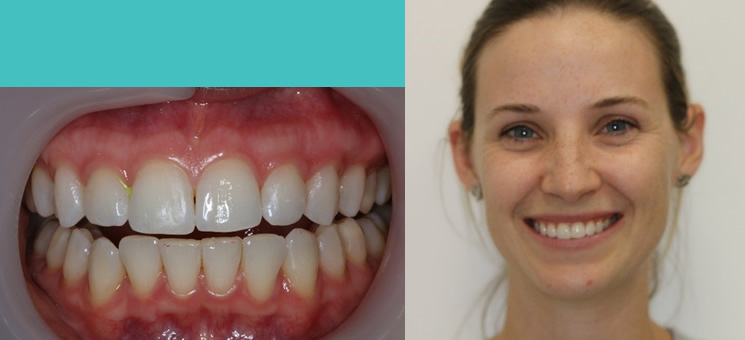
Dr Lou removed my buttons and I had two blissful weeks of no buttons, but I had to wear the same aligners for four weeks – the aligners are dank after two weeks, so four weeks of the same aligners isn’t ok!
My upper teeth didn’t need much refinement and only needed 2 more active aligners. My lower teeth needed 8 active aligners, 16 more weeks of treatment! Dr Lou put on the new buttons and gave me my new aligners. I was the perfect patient this time, I had no pregnancy excuses and just wanted to be finished.
My Invisalign course of treatment was about eighteen months in total, it would have been twelve months if I was a more compliant patient. I am very happy with the final results! Dr Lou put an upper and lower wire retainer on the back of my teeth. I continue to wear my aligners at night and will do for the rest of my life!

Pros:
- No sharp brackets to cause terrible ongoing ulcers
- Much more comfortable than traditional braces
- Trays can be removed for eating and cleaning teeth
- You become OCD about cleaning after every snack, meal, and drink – who wants to put trays back over dirty teeth! This is also a con, because then you don’t put your aligners back in for hours.
- Flexible appointment scheduling, generally every six weeks but if you are away, you can get additional aligners which means your treatment time isn’t extended
- If you have a special event you can take them out
- The aligners and buttons don’t show up in photos
Cons:
- Trays can be taken out and forgotten to be put back in for hours!
- They are clear and easily disposed of accidently
- It’s not very ladylike to remove aligners in public
- Headaches initially – made worse by only taking Panadol (pregnant). This is the same as braces but I found to be much milder. I did get a few small ulcers, but could have been prevented by wearing aligners more.
- The buttons become fluro yellow when you eat turmeric!
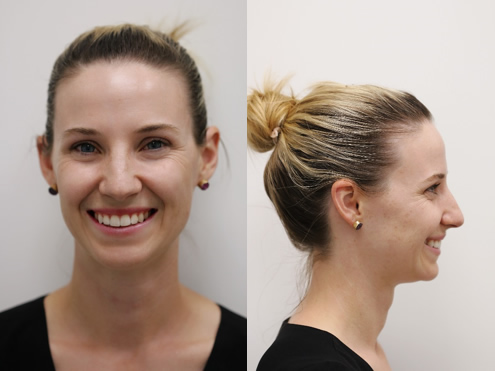
If you’re interested in learning more or you want to book a free Invisalign consultation, please click here to read more about the service with Tooth Dental.
